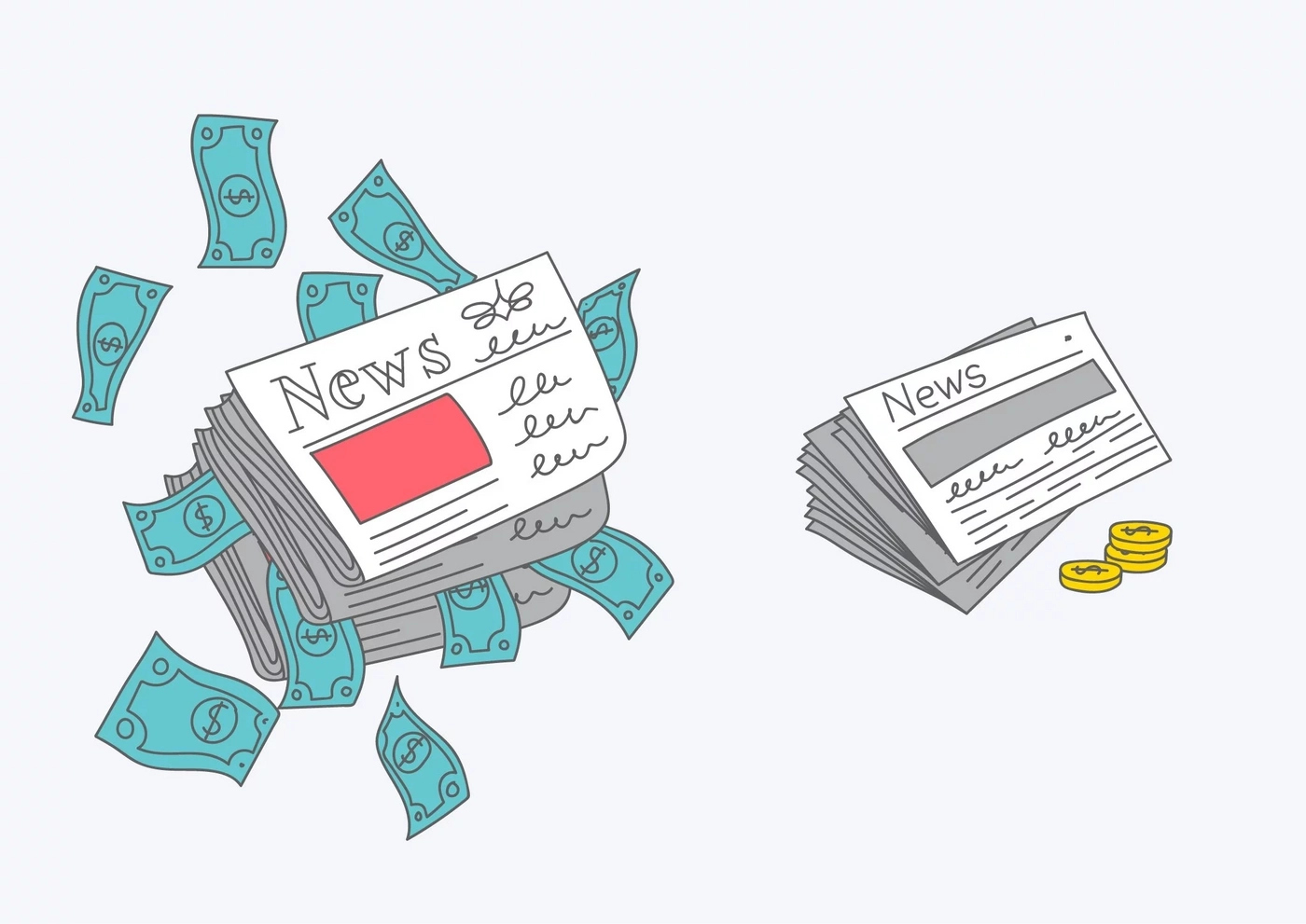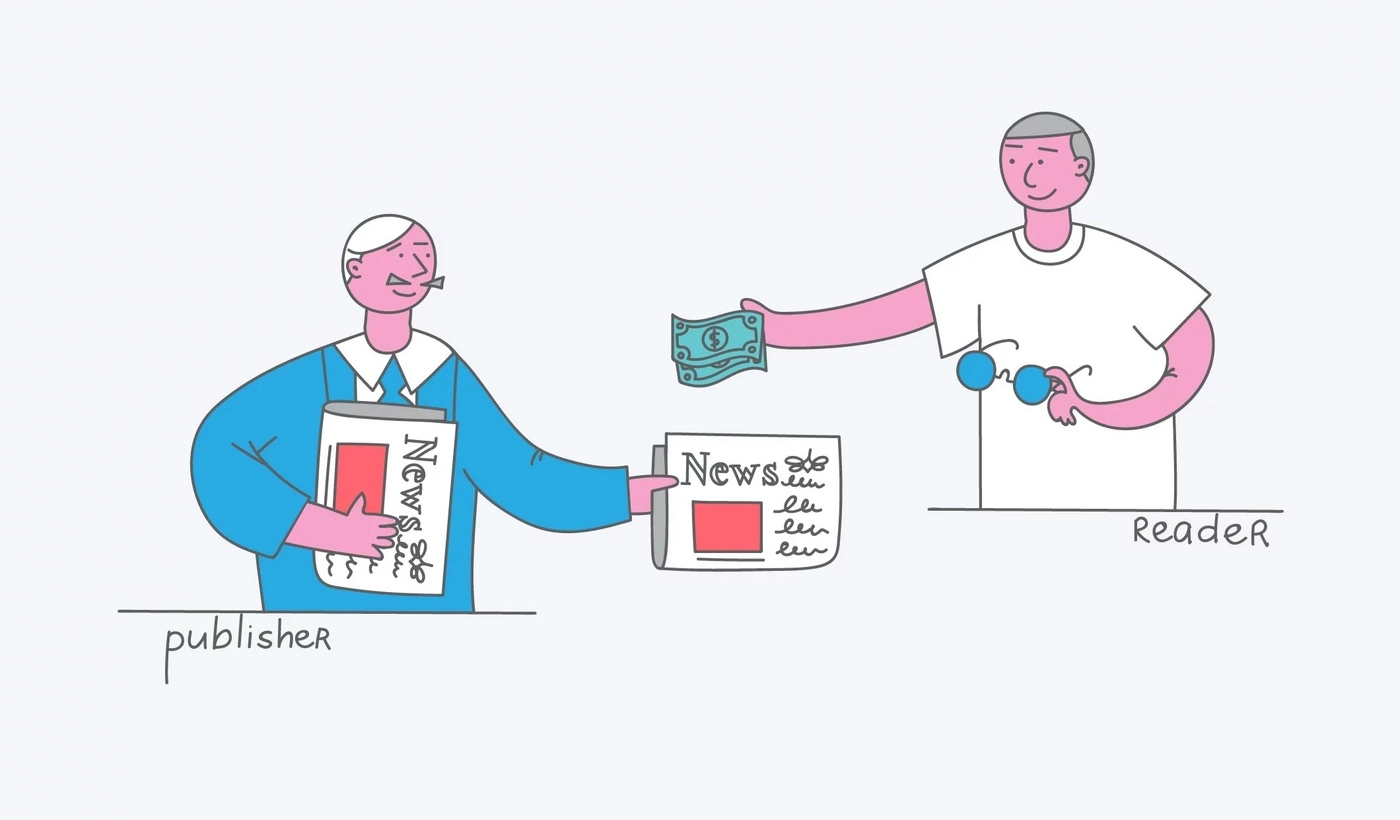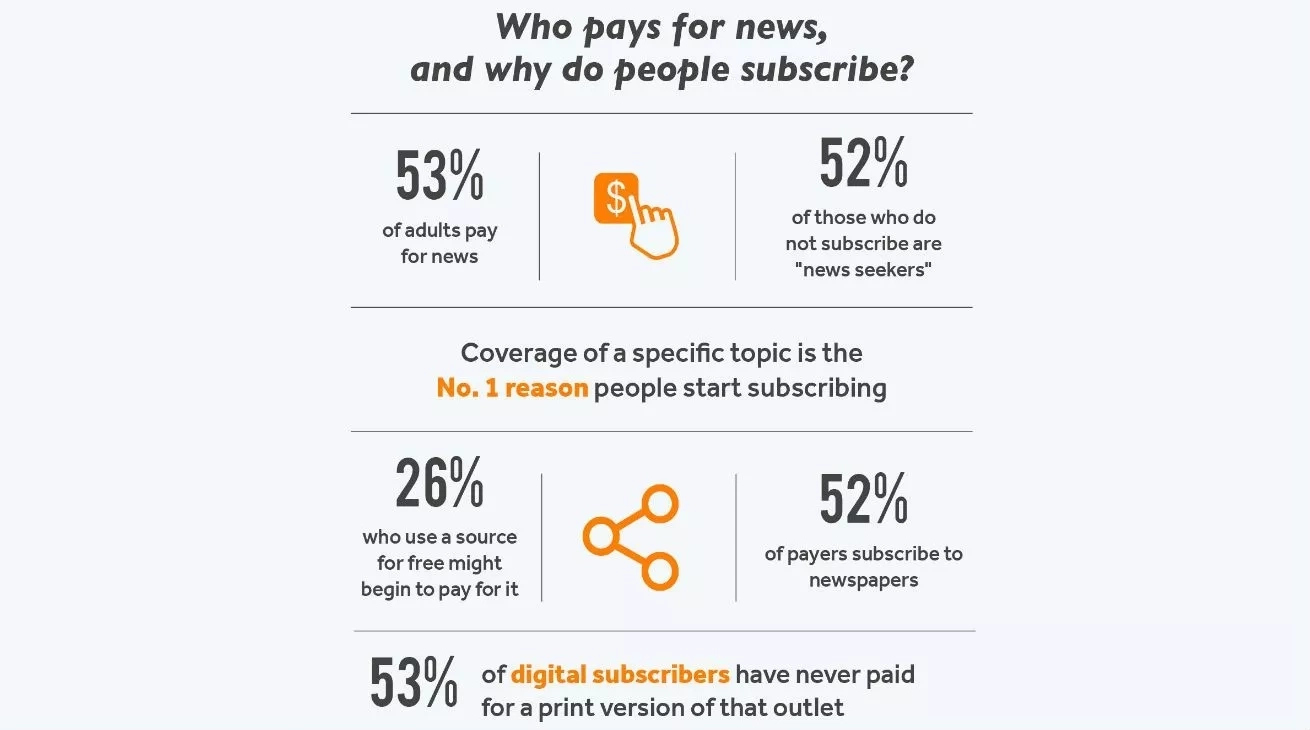Test how the paywall works. If you have Google Pay or Apple Pay enabled in this browser, 1-click payments will be automatically enabled for you. For traditional card or mobile payments, use the following info. Full name: (424), Credit card: (4242 4242 4242 4242), CVC (242), Expiry (04/24), Phone: (00000010), PIN (5544).
No business is grown just to gain popularity. You need to define the monetization model for your media resource, as every business has to create revenue.
Competition for people’s attention is enormous in the media business.
Imagine you have a successful newsroom, thousands of people read it on the daily basis, your content becomes viral and readers share it with their friends. However, no business is grown just to gain popularity. You need to define the monetization model for your digital media resource, as every business has to create revenue. The question is: “How to turn content into profit?”
Publishers focus on two points
No matter your approach to monetizing your blog, newspaper or digital media portal, it’s necessary to keep these two points in mind:
- Serve your audience. Publishers should deliver useful and engaging content to their readers. This content has to be unique, valuable and informative, otherwise, visitors will look for something else. Publishers should put their readers first, so it is not all about promotion and advertising.
- Pick a suitable monetization model. If publishers change their business models to set their visitors free from tons of ads, how can they still make money?

Content as a Product
Printed newspapers and magazines used to be a product. In the modern economy, digital content is the product itself. Engaged users and loyal clients highly value content relevant to their interests, they are ready to pay money for access to it. Still, making unique texts alone does not result in millions of dollars.
Creating unique content means said content will be your actual product, and the point is to target the right audience.

Can publishers earn via paywalls, like The New York Times or the Financial Times? Their practice shows that it can be effective, and The American Press Institute states that 77% of nearly 100 U.S. successful newspapers use the paywall model.
Why do people subscribe?
Continuing the topic of paywalls and subscriptions, we should mention the research of The American Press Institute. Their research found that 53% of Americans pay for news (digital or printed) and read articles on topics they individually prefer.

According to the Institute, subscribers have various motivations. Access to local news is the main motivation, but not the only one.

Use this data while exploring your target audience, their needs and preferences, and remember the main points:
- Pay attention to the ‘news seekers’ category, as they are the biggest audience.
- Stay professional, as readers need high-quality articles. People are ready to pay for premium quality.
- For the reason listed above, news potential is not utilized, so you can experiment with different plans for your content.
- Try to reach not just adults, but also a younger audience, as 37% of young adults from 18 to 34 years old pay for information.
So, are paywalls effective for digital media?
Paywalls and subscriptions have benefits both for publishers and subscribers. For publishers, it means that they can generate income from their customer base without using ads. You have loyal visitors who pay you money. What’s more, annual subscriptions can bring more revenue than monthly advertising campaigns.
The main concern with this monetization model is that you lose the benefits of the advertising channel and have to think about how to attract visitors and turn them into customers. Companies usually choose freemium and metered paywalls to achieve this goal, while more established ones are free to use hard paywalls.
How Can I Set Up a Paywall?
Publishers should look for point and click managed paywall and digital subscription solutions that are easy to set up and include reporting, single article micro-transactions, email subscriptions, and more.
Zlick Paywall is one of the options and you can get started for free.



Test how the paywall works. If you have Google Pay or Apple Pay enabled in this browser, 1-click payments will be automatically enabled for you. For traditional card or mobile payments, use the following info. Full name: (424), Credit card: (4242 4242 4242 4242), CVC (242), Expiry (04/24), Phone: (00000010), PIN (5544).